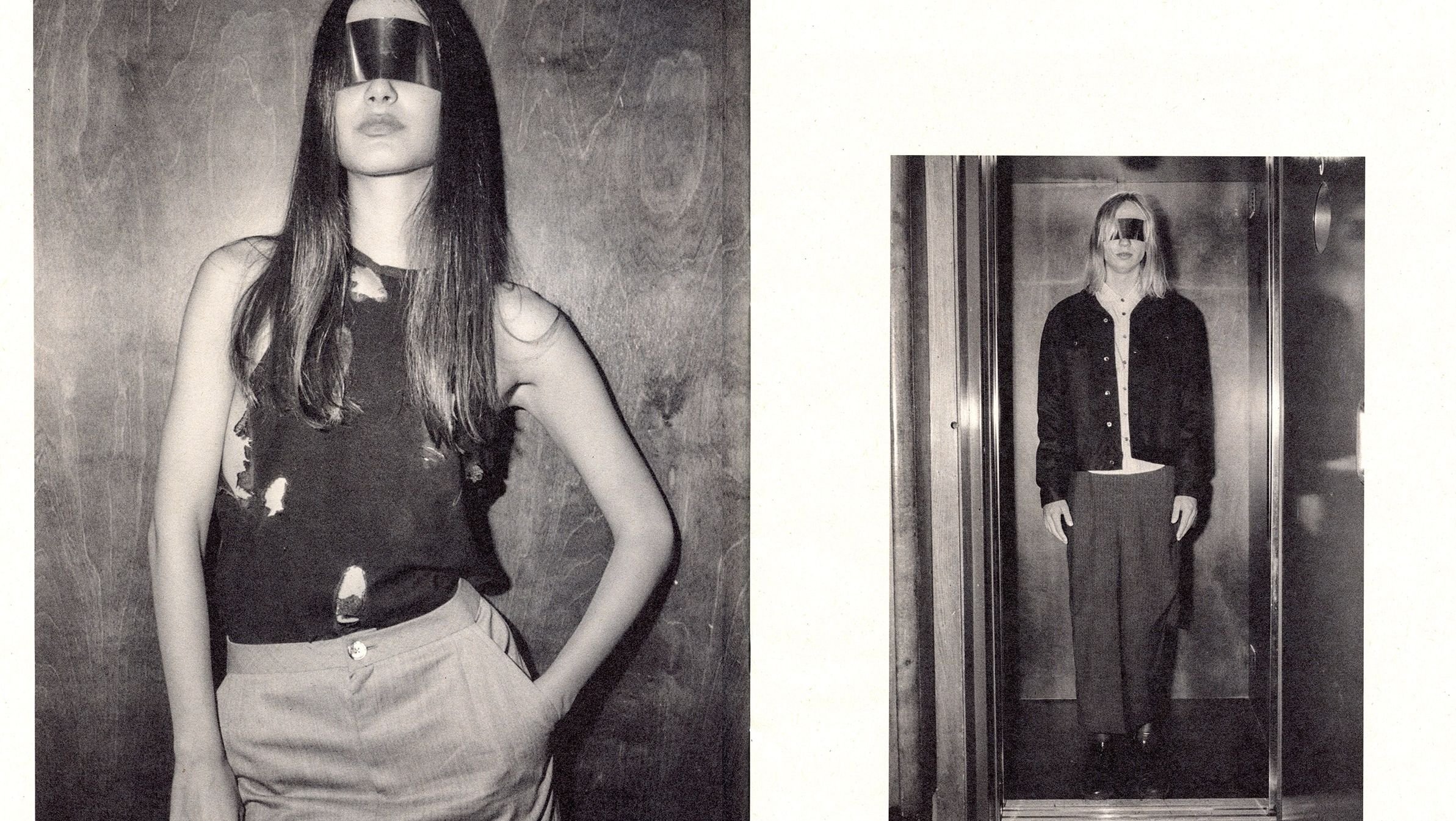In this exclusive Amsterdam Fashion Week interview, we catch up with trailblazing designer Tim Christiani. Renowned for challenging gender norms and redefining identity in fashion, Christiani offers insights into their innovative design practice, which notably includes upcycling deadstock materials and incorporating human hair. We also delve into the importance of creative industry friendships and how collaboration fuels Tim’s artistic process.
In your work, you aim to dismantle stereotypes and question their relevance. How do you think your designs contribute to the current discussion around gender and identity in the fashion world?
The people I design for are both vulnerable and powerful. I find it fascinating to bring together apparent contradictions so that they can ultimately strengthen each other. My designs challenge traditional notions of gender and identity by playfully experimenting with materials, shapes, and silhouettes. This blurs normative ideas and creates new possibilities. By deconstructing stereotypes, I hope to create more space for fluid expressions of identity within the fashion world.
You choose to use deadstock materials in your work. Can you explain how this choice influences your creative process?
I find it fascinating that material is finite and the possibility of reproduction remains limited. This reflects a desire for authenticity, something often lacking in a society where almost everything is commercially available. The same applies to natural materials: no lock of hair is exactly the same, every tooth is unique. Similarly, no garment is ‘the same.’ This means that the material influences my design process from the start and forms an essential starting point.
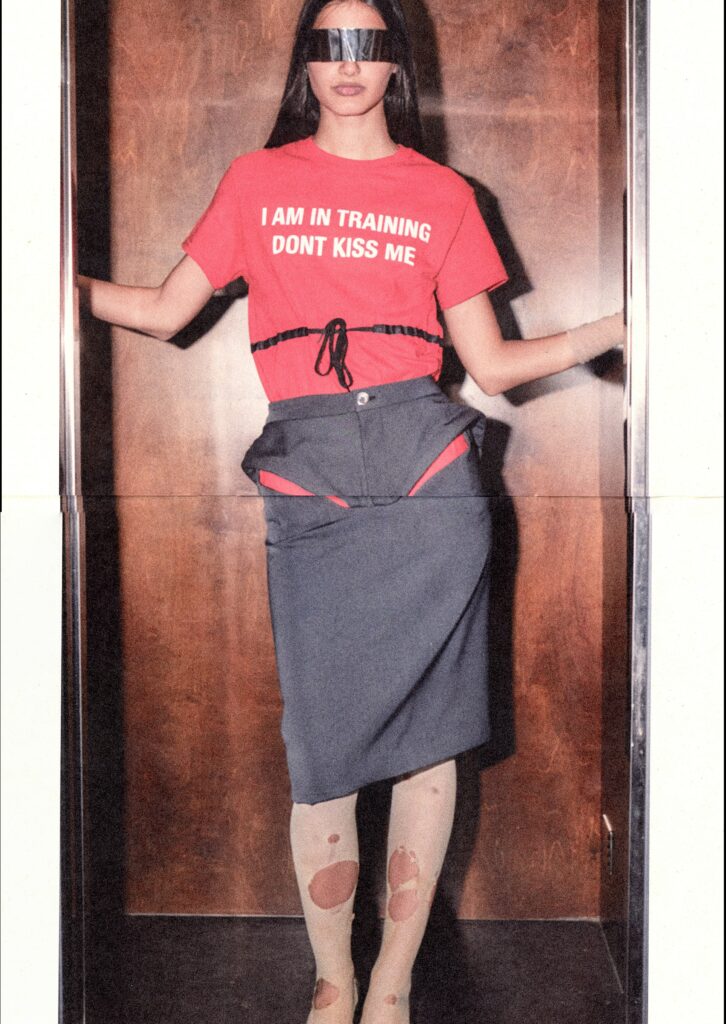
Can you tell me more about the inspiration behind your first capsule collection, “In And Out Of Grace”? What attracted you to the work of Claude Cahun?
In “I am in training, don’t kiss me” (1927), Cahun presents herself in a boxing costume, a traditionally masculine outfit, while simultaneously incorporating elements that undermine this masculinity—such as a painted curl and a soft facial expression. The combination of these contrasts creates a nuanced and complex character that embodies both strength and vulnerability, masculinity and femininity. The subtlety with which Cahun portrays herself intrigues me; it is the same quest for identity that I pursue in my designs.
(*Cahun writes that she feels neither man nor woman. Although subsequent works do not sufficiently show that Cahun prefers or uses other pronouns than she/her, there is a strong suspicion, based on one of her texts, that Cahun lacked the right language to express her experience of gender. This experience and her linguistic expression of it cannot simply be translated to the contemporary context. Therefore, we refer to Cahun with the language she had available: she/her.)
In your collection, you play with a gender-neutral wardrobe and distort masculine and feminine tropes. Can you give some examples of how you did this in “In And Out Of Grace”?
In line with Cahun’s approach, I designed a wardrobe that can support both feminine and masculine elements. It’s about the strength of the wearer themselves, not about the garment dictating a specific identity. An example of this is a design with trouser panels that looks like a traditional pair of trousers from the front, but upon walking or from behind, it becomes clear that it is actually a skirt. This play with perception and movement emphasises how identity can be fluid. For me, it’s a balance between the classic and the unconventional—an invitation to look deeper than the surface.
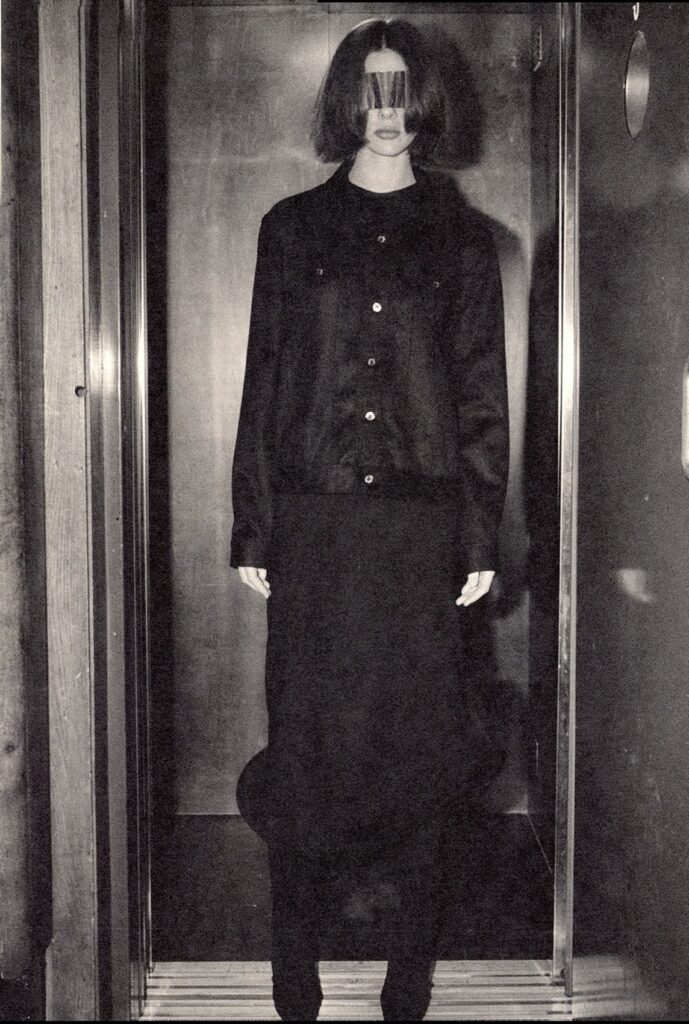
Human hair plays a symbolic role in your designs. What fascinates you about the use of hair in fashion, and how have you incorporated this into your current collection?
Hair is a souvenir of the body—it carries our DNA, our history, and the traces of our life. It is deeply personal and symbolises our transience. At the same time, it is one of the most intimate parts of our body that, once cut, we often discard without thought. This fascinates really me: why don’t we wear our hair with the same pride as a peacock shows its feathers? Why is hair often seen as ‘dirty’ once removed from the body? Is it the recognition of the material and the confrontation with our own finiteness?
Every garment I make contains a lock of my own hair—the last piece of myself I can pass on to the clothing. I have further developed this concept in my collection, for example, in a classic pinstripe blazer with seams from which hair ‘grows’, and a skirt whose entire lap is covered with human hair, like an almost vulgar extension of the pubic area. These are celebrations of what is often overlooked or forgotten—a way to give value to what we normally consider discarded.
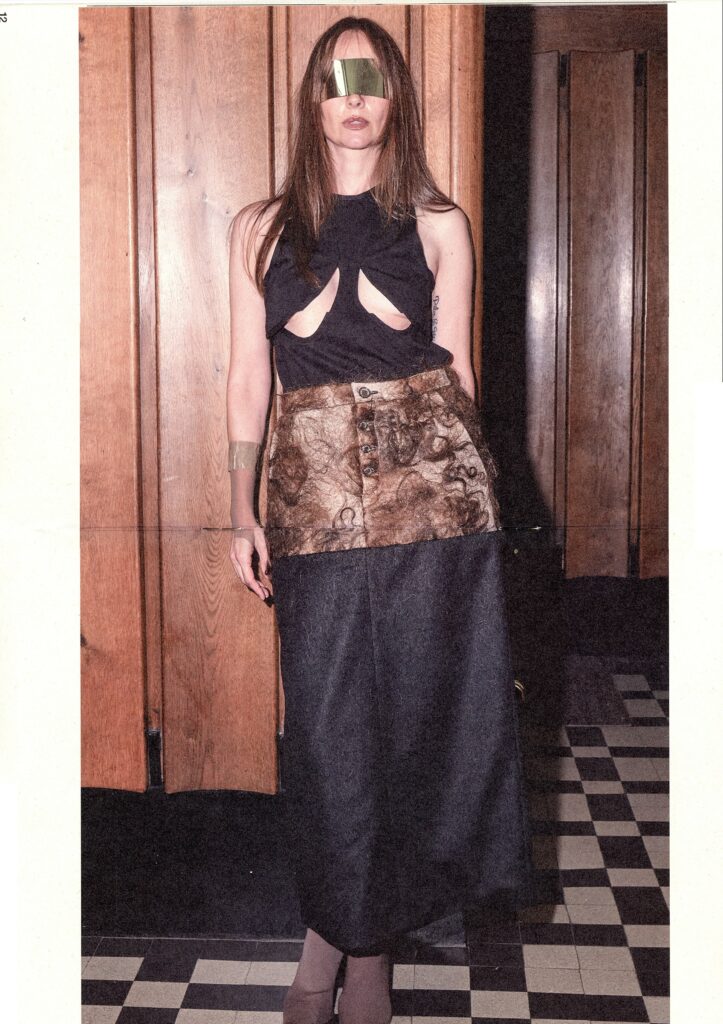
Last year, you collaborated with Ninamounah on “The Gatherers”. How important is it for you to have friends within the Dutch creative community?
This has always been very important to me. As a teenager, I was fortunate to have a close-knit, creative group of friends who shaped me. Recently, I became friends with an architect, Camillo Fiorito—someone who works in a completely different way and with different materials. This has given me new insights and inspiration. I am someone who gets inspired through conversation. I need people who look at my work with a fresh perspective and challenge me. This way, we help each other grow and become better creators.
Besides your work in fashion design, you are also active with Christiani Solutions, which specialises in bespoke corporate clothing. How do you combine the creativity of your fashion collections with the practical requirements of corporate clothing, and what challenges do you encounter?
Surprisingly, they overlap quite a bit; I love that practical approach. The frameworks within which I work help me find targeted and effective solutions. While I incorporate symbolism and conceptual ideas in my collections, with my uniforms, I focus on concrete, measurable problems. With my background in fashion, I can offer something extra to companies; I can look beyond just functionality and seek ways to create an image that fits the identity of a company. The biggest challenge is finding the balance between aesthetics and practical requirements, especially since corporate clothing often has to meet strict criteria. But it is precisely this tension that makes it interesting and gives me the chance to offer companies something unique.
What are your future plans? Are there specific themes or ideas you want to explore further in your next collections?
I want to further develop and refine my signature as a designer. Transience and human vulnerability are significant themes in my life, and I want to explore these even more deeply in my next collections. I want to broaden my use of materials and symbolism to communicate these ideas more powerfully. Through these collections, I want to create more made-to-measure pieces because I find the connection and personal approach very important. I also really want to collaborate with a wig maker or create a music video. I strongly believe in the power of interdisciplinary work to discover new perspectives and inspiration. Additionally, I want to expand my uniforms business further and design and produce more creative solutions for companies. And as a quiet dream… to make an outfit for Fiona Apple.
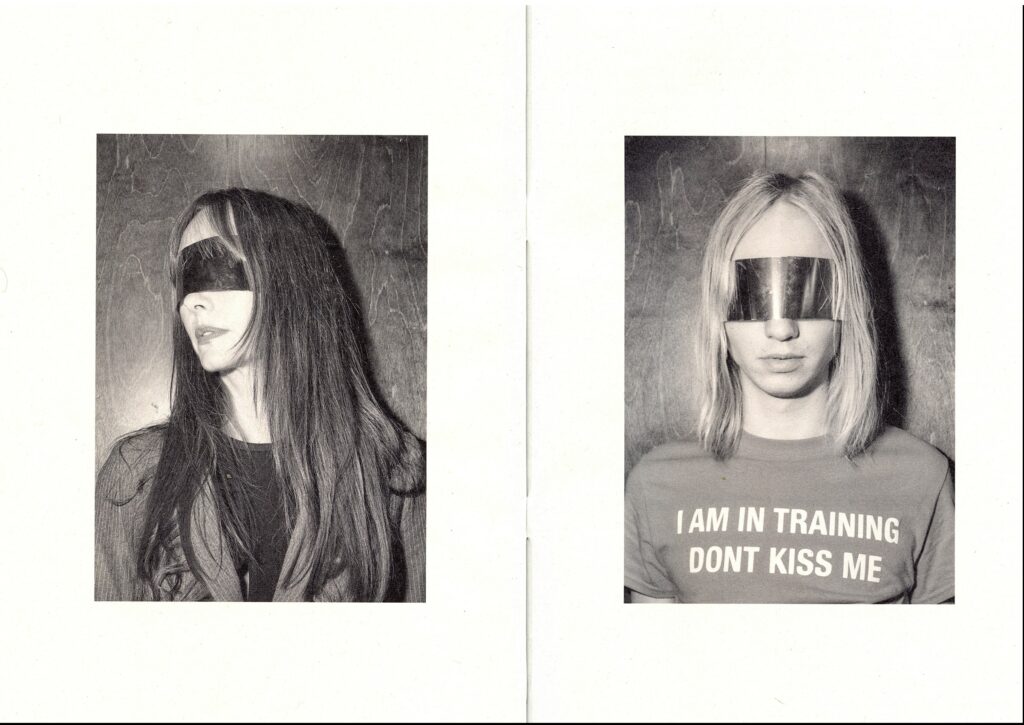
Credits
Photography: Sam Morsink
Creative Director: Ferdi Sibbel, Lotte Knippers @ferdisibbelstudio
Styling: Pilar Madimin
Models:
Melle Homminga
Tanja Heintjes @ullamodels
Britt V @michamodels
Lizi O @michamodels
